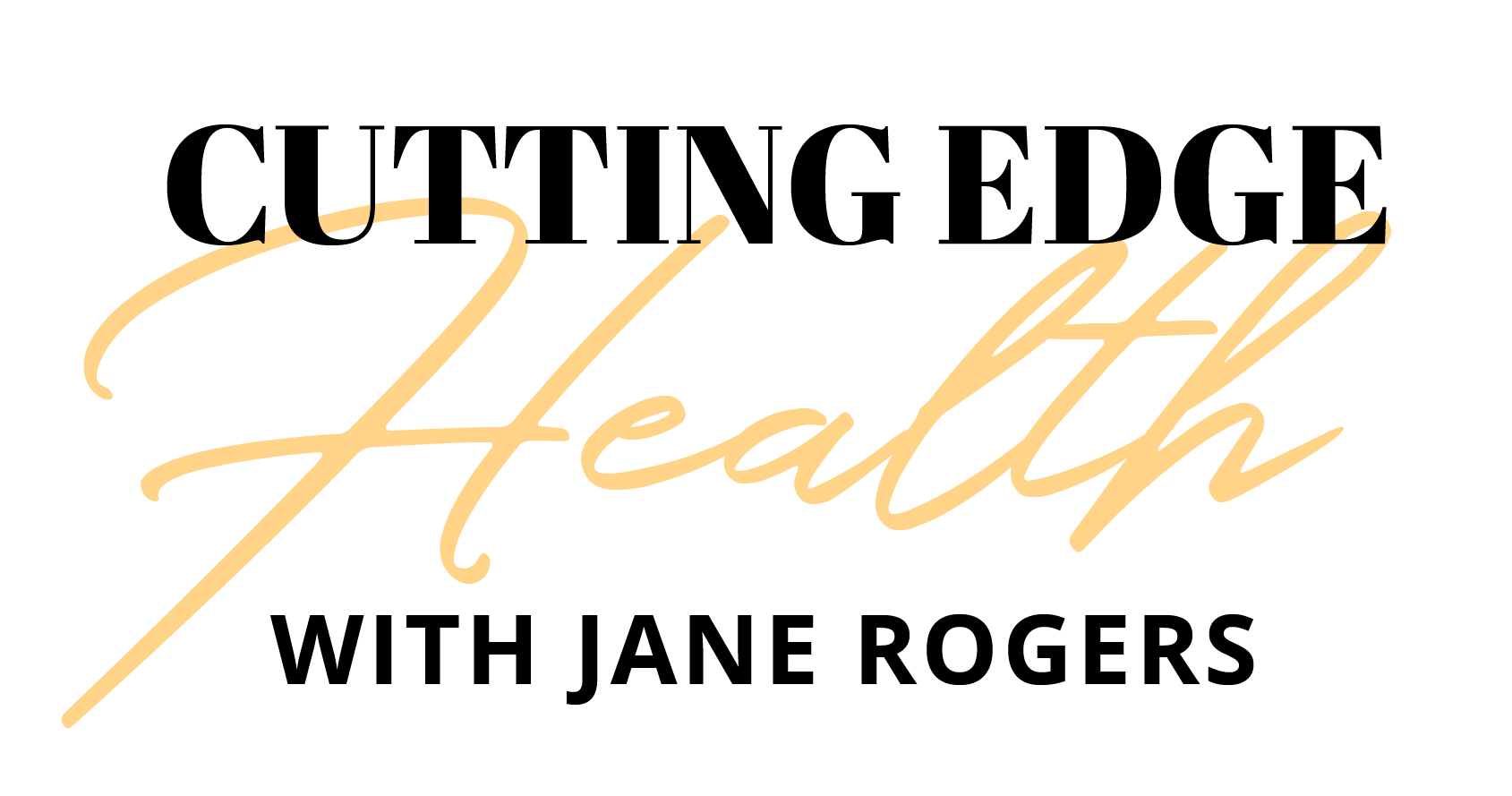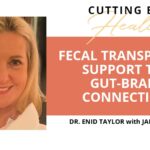
In part one, the author, David Hoffman, Jane Rogers’ husband, described what it was like to discover physiological evidence that seemed to support his lower biological age markers. In part two, he explains the various interventions he has been following to increase his healthspan and his concerns about hubris.
When Jane, my wife and the host of the Cutting Edge Health: Preventing Cognitive Decline podcast, first started showing serious symptoms of dementia, not just occasional “senior moments,” the medical consensus declared that nothing could be done to slow the progression of the disease. The fact that she had inherited the APOE4 gene from parents who both had Alzheimer’s seemed to confirm this. That’s the verdict we faced when we listened to an interview with Dr. Dale Bredesen on the Peoples’ Pharmacy podcast. Bredesen offered a radically different prognosis. Alzheimer’s could be prevented, he argued, and he had proof that his protocol, described in his ground-breaking book, The End of Alzheimer’s, worked. He outlined his research and protocol in a two-part interview that Jane did with him. Part 1 here and Part 2 here.
Despite tens of billions of research dollars aimed at reducing the buildup of plaque and tau, the pharmaceutical industry has largely failed to make any progress whatsoever in preventing or reversing Alzheimer’s. Their underlying concept was wrong, according to Dr. Bredesen. Rather than a single cause, he argued, Alzheimer’s was the result of a constellation of issues. Bredesen’s multifaceted approach and the clinical success he was having offered us hope that we could do something to slow or reverse Jane’s cognitive decline.
After listening to that interview, Jane called a number she found for Dr. Bredesen, and he generously answered her remaining questions. We began following his protocol with a multitude of blood tests in consultation with several functional medical doctors we trusted, one of whom was trained in the Bredesen protocol. Jane designed her own spreadsheet that tracked the thirty-six indicators Bredesen claimed were collectively responsible for the pathology we call Alzheimer’s, factors like blood pressure, inflammatory markers, and glucose. When she started, most of these indicators were in the red zone, but with hard work and determination she moved almost all of them into the green. You can imagine how this also improved her overall health. Her cognitive issues completely disappeared.
Bredesen’s protocol requires incredible dedication and some expense, but it works. Through Jane’s research and, later, through her interviews on the Cutting Edge Health podcasts, we began to learn about other interventions that also held great promise in preventing cognitive decline, most especially the exciting new research around aging. Scientists studying longevity began to realize that Alzheimer’s, like other age-related diseases, could be prevented or reversed by attacking the disease of aging itself. No wonder the vast majority of patients suffering from cancer, Alzheimer’s, cardiovascular disease and other major causes of death, were old people. These diseases are the results of aging; and, theoretically, if aging could be slowed, these debilitating diseases should largely disappear.
The literally life-changing moment in our health journey was reading David Sinclair, Phd’s book, Lifespan.
Sinclair explained how the aging process worked and how scientists around the world were able to hack it. Although this sounded like woo woo science fiction, the results from hundreds of studies on organisms from yeast cells to dogs and humans, consistently showed how aging worked and how it could be manipulated. The short explanation is that when our bodies are under stress, our epigenetic control system tells the body to stop growing and reproducing and to hunker down. And there are relatively benign ways to induce that state.
The first promise of age reduction came with the much-publicized discovery that resveratrol, a substance found in red wine, increased the lifespan of mice in laboratory experiments by 40%. Although the equivalent amount of resveratrol in wine required in humans would vastly exceed what any of us could consume, scientists began to unravel how this process worked. Soon, other studies found ways to reprogram our epigenetic code to inhibit the aging process.
From Sinclair’s book, it seemed the most promising way for us to benefit from this recent research were fivefold: resveratrol, NMN, Metformin, Trimethylglycine (TMG), and rapamycin. (Important disclaimer. I am in no way a medical practitioner. I am only relating what our personal experiences have been. It’s important you talk with your own medical practitioners on this topic.) Metformin is a widely available prescription drug for diabetes. Millions of people in the US have taken it for decades, with few minor side effects, and with a doctor’s order it was inexpensive at the pharmacy. It’s been reported that people taking Metformin, even though diabetic, lived considerably longer than non-diabetics who weren’t taking it.
Jane had been wanting to take rapamycin for several years after evidence mounted that it lowered the risk of Alzheimer’s, but it was hard to find a doctor who would prescribe it. Of all the interventions we were considering, it seemed that rapamycin held the greatest potential. Then we read a long essay by Dr. Mikhail V. Blagosklonny published by the National Institute of Health which exhaustively reviewed the many studies on rapamycin. The benefits of taking rapamycin, he concluded, were so great that “not taking Rapamycin may be as dangerous as smoking.” Since, Jane interviewed Matt Kaeberlin, PhD on his rapamycin dog research.
Blagosklonny also noted that there was now a clinic treating patients with rapamycin for longevity in Little Neck, New York run by Dr. Alan Green.
Off we went to Little Neck. Dr. Green’s clinic was in his home. We’d sent him reams of lab results from our functional medicine doctors. In four and a half hours, Dr. Green seemed to connect all the dots in our medical histories. We’ve never experienced a more thorough and insightful interview. We were stunned. He prescribed rapamycin for longevity for both of us and said he “couldn’t understand what family physicians did if they weren’t solely focused on longevity.”
After looking at my heart-related lab results, including a recent chest angiogram, EKG’s, coronary calcium tests, and ultrasounds of the heart, Dr. Green thought it imperative that I get a CT angiography of the heart and ordered a test which I took the next day. The CT angiography revealed blockages in three coronary arteries, one a 90% blockage of the “widow-maker artery,” which the chest angiogram failed to find. Dr. Green had saved my life! But in the middle of the subsequent heart stent procedure, the cardiologist stopped, explaining the blockages were in locations too difficult and I would need open heart surgery.
We called Dr. Green that night to tell him what had happened. He was emphatic that I didn’t need open heart surgery because I did not have any symptoms and I was about to start his prescribed treatment with rapamycin which would largely prevent me from future coronary problems, he explained. It was a tough choice for us to make, whether to take the advice of a top Washington, D.C. area cardiologist or from a physician working out of his house who was a zealous proponent of rapamycin. We went with Dr. Green’s advice. The stent procedure was attempted again with a different cardiac surgeon and new technology at George Washington Hospital, which turned out, the doctor said, “better than if I had had open heart surgery.” Thank you, Dr. Green.
As I travel this road towards increased healthspan and possibly increased lifespan, I naturally worry about hubris. It’s frightening to mess with evolution. I fear becoming like Icarus who flew too close to the sun. There’s a reason why living things age and die. Death makes way for the renewal of the species. Last night I received the results from lab tests of my biological age. The news was good, and it seemed to confirm the benefits of my healthspan quest. According to this test, I am now 15.5 years younger than my chronological age! If what we’re learning continues to pan out, I am far less likely to die from age-related diseases like cancer and Alzheimer’s. It’s difficult and humbling to let myself fully take in the reality of these possibilities. I fear that speaking to them out loud or writing them will tempt fate. But today, at this moment, I’m feeling great.












